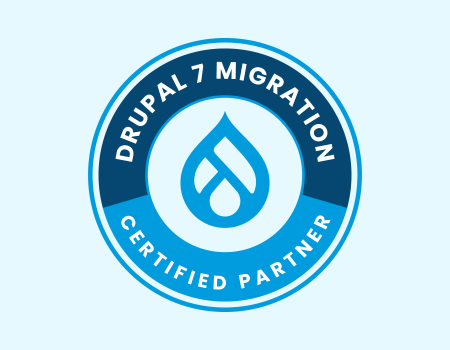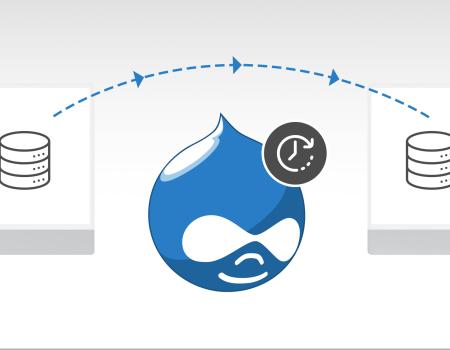The Risks of Staying in Drupal 7 After End of Life
Drupal 7 reaches end of life in November of 2022. This gives anyone running Drupal 7 over a year to migrate to Drupal 9 (or another alternative).
But what happens if you run Drupal 7 past the end of life date?
Well, it's like the common movie trope of someone driving out in the “middle of nowhere” and running out of gas. Or their car breaks down. They sit on the side of the road in a desert waiting with their hood popped. A tumbleweed rolls by. There are some vultures circling overhead.
Now, what does this have to do with Drupal 7?
Well, if you stay in Drupal 7 past its end-of-life (EOL) date and have no plan for supporting your website and that website breaks, you’re in the "middle of nowhere." The Drupal community will not provide support like security patches or updates.
And there won’t be many developers who will come to your rescue. The developers that are available will likely be very expensive. A tumbleweed will roll by (well, maybe not depending on where you live).
Bottom line: if you don’t have a plan in place for Drupal 7 maintenance after this version of the CMS reaches end of life and something goes wrong, you will no longer have community support. And worse, it will take a lot of money to hire someone to fix your site.
What is D7 End of Life
Drupal 7 is the most popular version of Drupal ever released. It’s been around since January of 2011 and there are still around 570,000 sites running some version of Drupal 7. This is down from an all-time high of over a million sites.
But Drupal 7 reaches its end of life in November of 2022 and sites will need to move do Drupal 9 or risk losing support. It seems very unlikely that all those sites will make the move to the latest version of Drupal. And there is precedence for this, there are still 17,000 sites running Drupal 6.x and even a couple hundred sites in 5.x – though, it seems likely that many of these sites have been abandoned or are otherwise not mission critical to an organization.
But, if a Drupal 7 site is mission critical to an organization, it is important to migrate that site. When the clock strikes midnight on November 28, 2022 a site powered by Drupal 7 won’t vanish. But over time it could potentially run into some major problems:
Potential Problems with Running D7 After its EOL
For starters, there’s security. Drupal 7 will no longer receive security patches after its end-of-life date. Site maintainers will instead have to search for and fix security issues. In addition to this, contributed modules will no longer receive security patches and updates. If a D7 site uses contributed modules that improve functionality, those modules become liabilities when not being patched. Even now, as Drupal 7 approaches its end of life, the Drupal community is putting more effort into modules for Drupal 9 than Drupal 7.
And then there’s things like PHP compatibility. If a Drupal 7 website is hosted on anything other than a dedicated server or, say, a computer sitting in a closet in an office, then the company that hosts that website will want to update the server operating system or the version of PHP. Once they do that, all the applications on that server, including Drupal, will need to be made forward compatible. Drupal 7 can’t be made forward compatible, and it won’t be able to keep up with new versions of PHP.
And finally, there’s the functionality of your website. Drupal 7 contrib modules, the modules built and supported by the community, will no longer be updated. If a site owner wants that functionality, they might have to write custom code to get it. Or, they may have to take a security risk with unpatched modules.
Upsides of Migrating Out of Drupal 7
But it's not all doom and gloom. Drupal 7 will be over a decade old in November 2022. The internet was a very different place when D7 was released. Newer versions of Drupal, like D9, are built on top of Symfony, which will make future migrations easier. They use more modern object oriented programming or OOP.
People have started to notice certain flaws as Drupal 7 has gotten older, like how server intensive it is. New versions of Drupal are built for the way people access content today. Migrating out of D7 is a lot of work, but by migrating, you hopefully will get a CMS that better serves you and your users' needs.
And if new versions of Drupal don't fit your needs, staying in Drupal isn’t your only option. If you absolutely love D7 and don’t want to move – consider Backdrop CMS, a fork of the Drupal 7 code that will be supported after November of 2022. If you want a more user friendly CMS and aren't using all the complex features of Drupal, maybe WordPress is right for you.
You can even stay in Drupal 7. Its really easy, all you have to do is nothing. But, by doing this, you risk the security of your site and it will likely take a significant cost and effort if you ever want to make any improvements.



